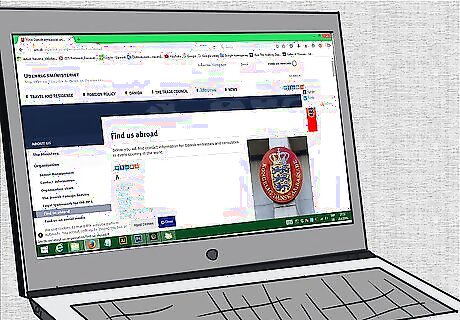
views
Learning the Basics

Learn about the Danish language. Danish is a tricky language, but it does have plenty in common with other north European languages. It is one of five North Germanic languages, along with Swedish, Norwegian, Icelandic, and Faroese. Danish is comprehensible for someone fluent in Swedish or Norwegian, so if you can speak Danish you will be able to talk to people across Scandinavia. An English speaker will recognise quite a few Danish words, which are similar to the English. For example, the Danish word drømme is similar to the English word dream, æg is like egg, flad is like flat, and søster is like sister. A big difference between English and Danish is the way words are pronounced, so it's important to practice your speaking and listening a lot. Grammatically, Danish has two genders, masculine and neuter which take articles en and et.

Learn some simple phrases. It's best to start by learning a few basic greetings and phrases to give you a taste of speaking Danish, and some early pointers about pronunciation. Here are some easy everyday phrases to practice: Hello – Hej (pronounced Hi). Good day – Goddag (pronounced Go-day). Goodbye – Farvel (pronounced Fah-vel). Yes – Ja (pronounced Ya). No – Nej (pronounced Nai). Thank you – Tak (pronounced Tack). Excuse me – Undskyld (pronounced Un-school). Sorry – Beklager (pronounced Bi-clay-er).

Listen for the pronunciation. You really need to listen and repeat Danish words to get a hang of the pronunciation, and get used to how letters and words sound. To develop your skills you'll have to practice speaking to people and having conversations in Danish, but before you get to that level you can build confidence by listening to clips online. Search online for clips of Danish words and phrases. There are a number of websites that have audio clips for key phrases, such as “hej,” “farvel” and “velkommen.”

Concentrate on the vowel sounds. When you're trying to work on your pronunciation in a new language, it's a good idea to pay particular attention to the vowel sounds. There can be a lot of variation in vowel sounds across different languages, and vowel sounds are at the centre of every word. Practice the following vowel sounds for Danish: a – pronounced “ah.” ä, æ – pronounced like the “a” sound in the English word “ash.” å, aa – pronounced “aw” or “oh.” e – pronounced as “eh.” I –pronounced as “ee,” or shortened to “ih” when placed before a double consonant. o – pronounced “oh” ø – pronounced like the German or Swedish letter “ö,” or French sound “eu.” u – pronounced like the “u” sound in the English word "put." y – pronounced like the German “ü” or the French “u.”
Developing Your Danish Skills

Consider joining a class. To really work on improving your Danish speaking skills you should consider signing up for a class. Joining a Danish class will give you plenty of opportunities to practice speaking alongside listening, reading and grammar practice. To get good at speaking a new language takes a lot of practice, and joining a class will give you a group of fellow Danish learners to practice with. The teacher will often be a native Danish speaker, and will be able to answer your questions face-to-face. The teacher will be able to correct your pronunciation and spot areas where you make regular mistakes. Search online for language schools near you. Often local schools and colleges will run adult education courses in languages. Danish classes may not be as easy to find as Spanish, French, German or Italian. You can access contact information for a number of professional organisations through the website of the American Council on the Teaching of Foreign Languages.

Investigate classes provided by the Danish Cultural Institute. The Danish Cultural Institute is an independent organisation that is funded by the Danish government. This Institute works to promote Danish culture abroad as well as international cultural exchange. It often hosts concerts, exhibitions and theatre and film events, as well as offering Danish classes. There are Institutes in a number of countries, including Brazil, China and Russia. To find about events and activities related to Denmark and Danish culture in your country, you can contact the Danish Embassy. You can find the contact details for the Embassy and Consulate in your country here: http://um.dk/en/about-us/organisation/find-us-abroad/

Hire a private tutor. To study Danish in a more focused way, you might consider hiring a private tutor some for one-to-one lessons. These more intensive classes will require you to talk in Danish a lot more, and you can develop your speaking skills more quickly through this greater exposure. You lose some of the fun of a group dynamic, and one-to-one classes will be more expensive, but you do get the complete attention of the tutor. If you think this could be a good approach for you, start by searching online for tutors advertising themselves. Use trusted websites when looking for private tutors and always look for online reviews. Consider the tutor's qualifications and experience, and ask for a trial lesson before you commit to booking in a block of lessons.

Use free online resources and apps. If you are struggling to find a regular time to have lessons or you want to access more materials to practice in your spare time, you can use online resources and websites that provide lots of opportunities to develop your Danish. There are some comprehensive websites which have a lot of information about grammar, vocabulary and pronunciation. There are lots of free apps for language learners, and big ones such as Babbel and Duolingo have Danish sections. An advantage of these apps is that you can practice whenever you have your smart phone.
Practicing Your Speaking

Practice speaking with others. To improve your speaking you will need to get lots of practice in conversational Danish. To do this you will need to find people that you can talk to in Danish. If you have joined a class, ask some of your classmates if they would like to get some extra practice by meeting up for a coffee and some Danish conversation. Try to only speak in the foreign language for ten minutes, and then gradually increase this period as you get more accomplished.

Find an online Danish language exchange partner. If you want to practice your Danish, you can offer your language skills in exchange. The internet makes it easy for language learners to get in touch and communicate. You can find someone to write to or chat to online, who is a native Danish speaker and will be able to advise you on informal as well as formal aspects of the language and culture. Talking to someone around your own age who is not a tutor will expose you to more slang expressions and casual conversational Danish. Visit a language exchange website and look for people offering their Danish skills. You may find people who live in your city and are interested in meeting up for a language exchange.

Talk to a tutor over skype. If you are not learning with others it can be tricky to find someone to practice speaking Danish with. Lots of language teachers are working online, and typically a skype lesson will be cheaper than a one-to-one lesson. You may be able to negotiate a lower rate for a lesson if you say that you want to focus more on speaking and conversational practice, as this is likely to require less preparation time for the tutor.

Immerse yourself in Danish. One lesson a week of an hour or two, or an evening on a language website will not be enough time to really learn Danish. The key to your success is the amount of practice you do outside of class. Try to take every opportunity to expose yourself to Danish and immerse yourself in the language as much as possible. Watching films and TV programmes in the language you are learning can help you get used to the sound of the language, so ask your teacher for some recommendations. If possible, visit Denmark on holiday to try out your Danish conversational skills.



















Comments
0 comment